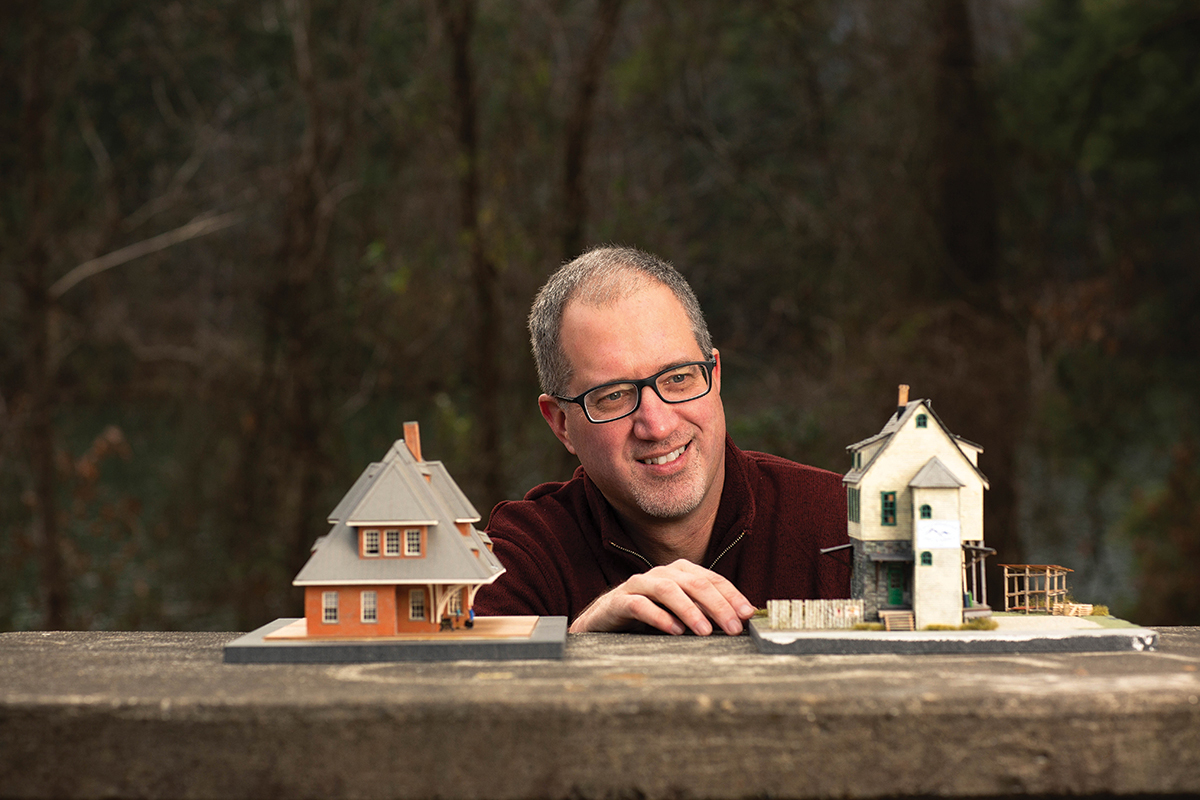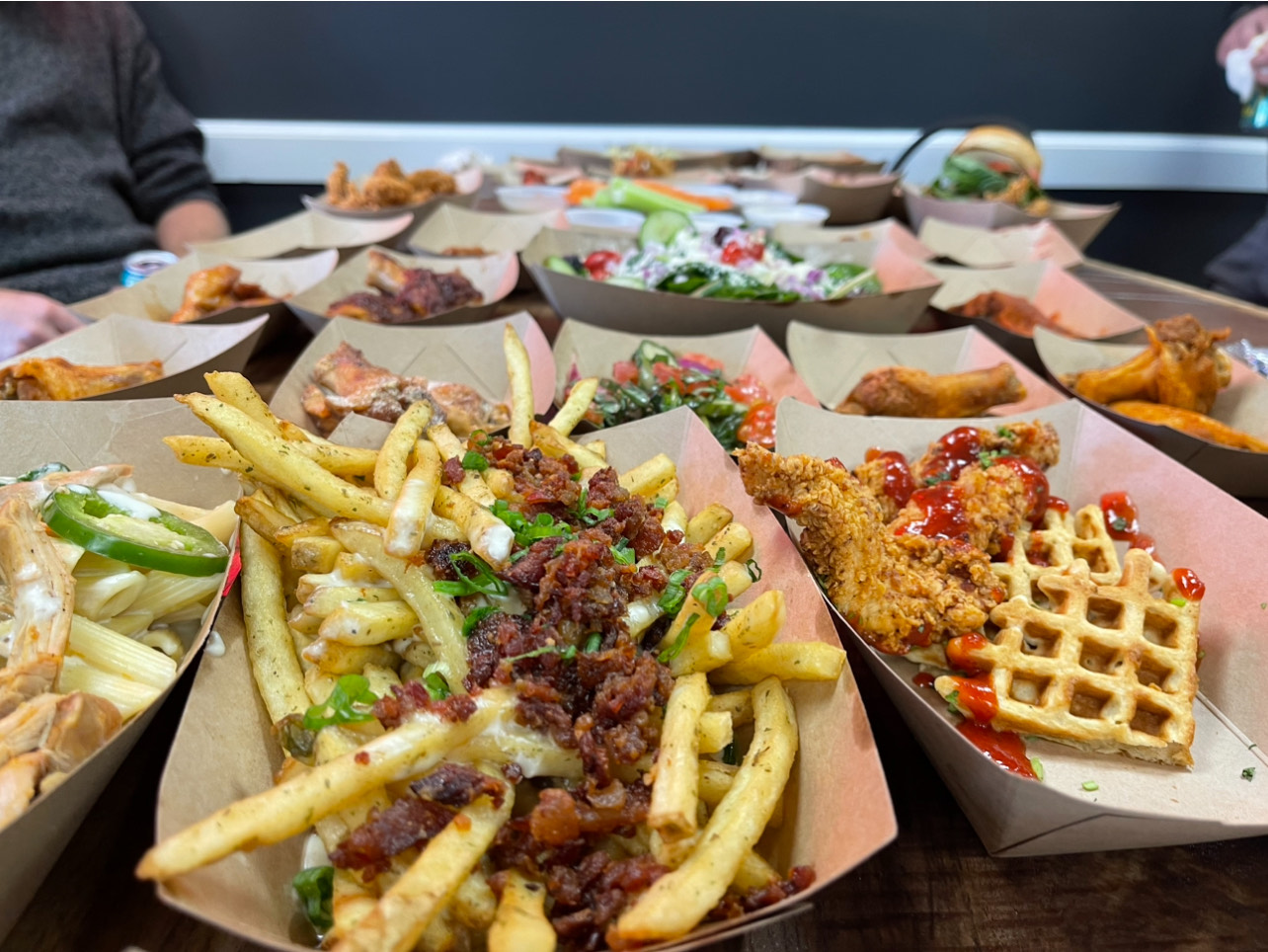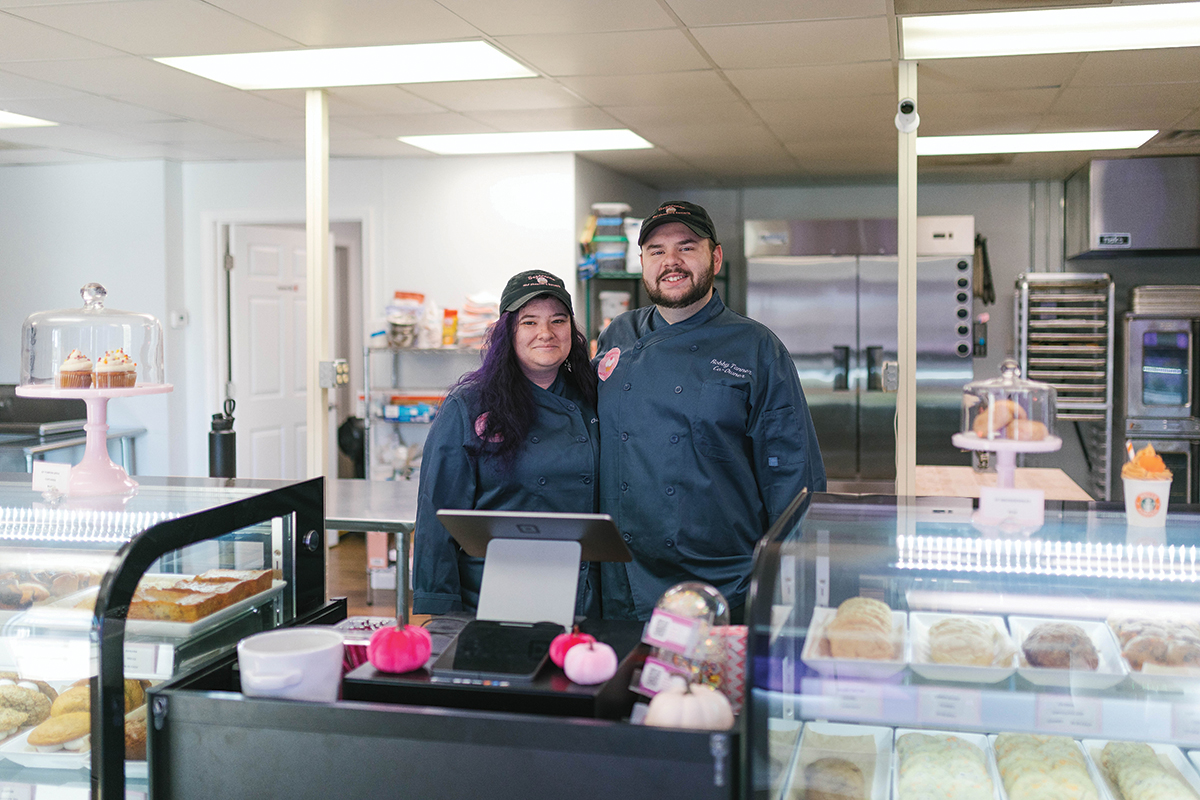Engineer replicates architecturally exact worlds for model-train hobbyists

Stephen Milley is in the station house.
Photo by Colby Rabon
Not long ago, Stephen Milley was considering semi-retirement from an engineering career and devoting more of his time to his favorite hobby, model railroading, by lending his engineering talents to railroading friends who designed and sold railroading kits. The kits included the miniature depots and other structures that help create those diminutive tabletop worlds in such detail. “A good friend of mine suggested that I buy a laser cutter/engraver, and that he’d give me some work to cut materials for his kits,” Milley recalls. “That was all the push that I needed. It didn’t take long before I was designing and cutting my own scale structure kits.”
Opportunity knocked again when Milley learned that a railroading acquaintance was retiring and selling the rights to his kit business. Milley made a successful bid, and today has his own thriving business, Rail Scale Models, with an international customer base. “It turned out to be a great investment,” Milley says.

Buildings like this are an homage to small-town Americana.
Photo by Colby Rabon
His structures are art forms, miniature portraits of a rural America and the once-mighty railroads that held the country together. Milley’s company not only designs and sells its own structure kits, but acts as a designer and production facility for others. “I design and/or cut materials for quite a few other kit producers,” Milley explains. “Some of my bigger structure projects actually go under another company’s name. I’m just the ‘background’ guy. It’s a big part of my business.”

Milley’s models are replete with architectural details.
Photo by Colby Rabon
He caters to a hobby that’s been around longer than anyone today has been alive. The first electric toy train set appeared in America in 1901, from Lionel, a company still in business. Like many model railroaders, Milley was introduced to the hobby as a young boy. “I had a bit of influence from my grandfather with an O-scale table-top layout,” Milley says, referring to one of the most popular scales among enthusiasts. “I had some HO-scale model trains of my own, but I really didn’t get into it seriously until after college, when I had some time and a few spare dollars to get back into the hobby.”
Rail Scale Models, born six years ago when Milley was still living in Raleigh — he, his wife, and the company are now based in Horse Shoe — sells a wide array of structures. These include train stations, maintenance buildings, and the types of rural structures — barns, sheds, farmhouses — that any traveler on an actual rail journey across the country might observe.

Photo by Colby Rabon
Some of Milley’s highly detailed structures are derived from specific buildings: “In some cases I’ll seek out permission to replicate a structure in scale, and very rarely do I see any objection.” It helps that many of the real-world structures are owned and maintained by historic railroad societies, who are glad to have their buildings preserved in miniature.

Photo by Colby Rabon
Milley’s professional experience as an auto-industry engineer, and his familiarity with computer-aided design, proved to be crucial assets, along with a life-long interest in architecture and the ability to interpret architectural drawings. “I know enough about building standards and how to make estimates that I can get close enough to make a model look like a decent representation of an actual structure,” he explains. “It all begins in CAD for me. I do all my modeling in two-dimensional CAD, rather than 3D, because I can visualize these structures pretty easily in three dimensions.”
Once all the components are chosen, from windows and doors to chimneys and siding, the finished design is sent to a laser cutter. Milley uses basswood sheets for cutting into siding, with windows and doors cut from pressed card stock and other details, like shingles or tarpaper roofs, cut from paper.

Photo by Colby Rabon
“I use quite a few other details in my kits that I buy in bulk,” he says. (Examples are metal corrugated roofing, brick chimneys, and stove pipes.) Some of Milley’s creations are comparatively supersized when designed for O- and HO-scale layouts. One such brick structure was nearly 40 inches long and ten inches tall; another, custom made for a private client, was over four feet long and a foot tall.

Milley’s design work is sought by other companies, too. Catering to serious home hobbyists meant his business boomed during the pandemic.
Photo by Colby Rabon
During the past two years dominated by COVID, Milley’s business has grown exponentially. “The hobby has really exploded in popularity again,” Milley notes. “As people were stuck at home, many of them got back into [model trains]. It’s been extremely busy the past two years.”
So busy, in fact, that Milley’s had no time to set up his own model railroad at home. “I haven’t had much time to pursue that just yet.”
Stephen Milley, Horse Shoe, rail-scale-models.com. Rail Scale Models will have a booth at this month’s Asheville Train Show, held at the WNC Agricultural Center (765 New Airport Road, Fletcher) on Friday, Feb. 25 (12-7pm) and Saturday, Feb. 26 (9am-5pm). For more information, see asheville-trainshow.com.



